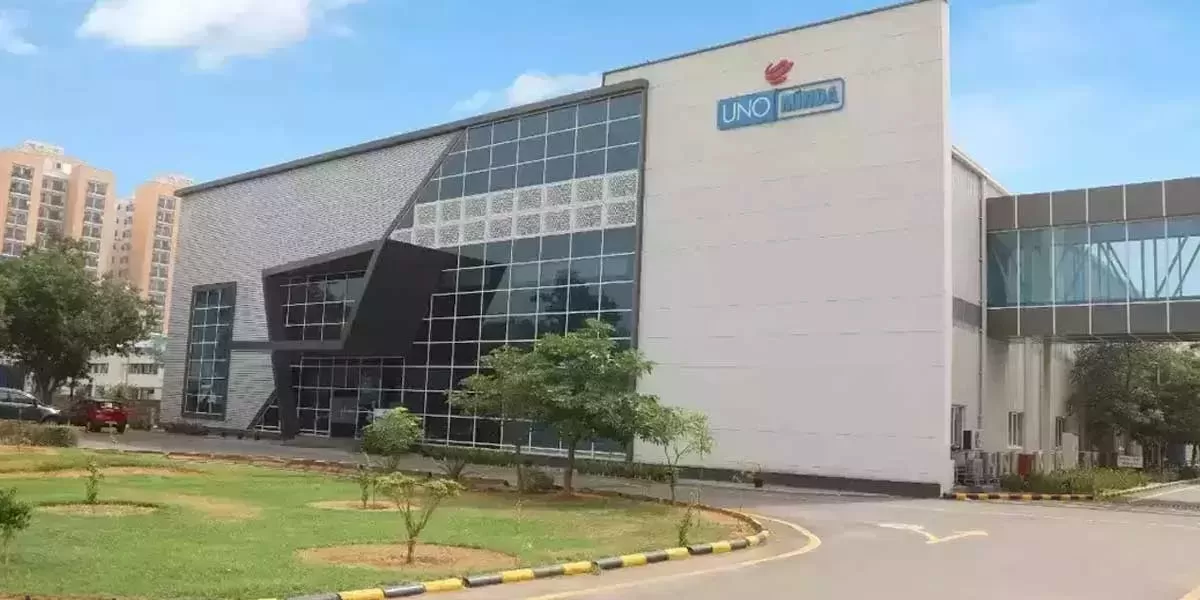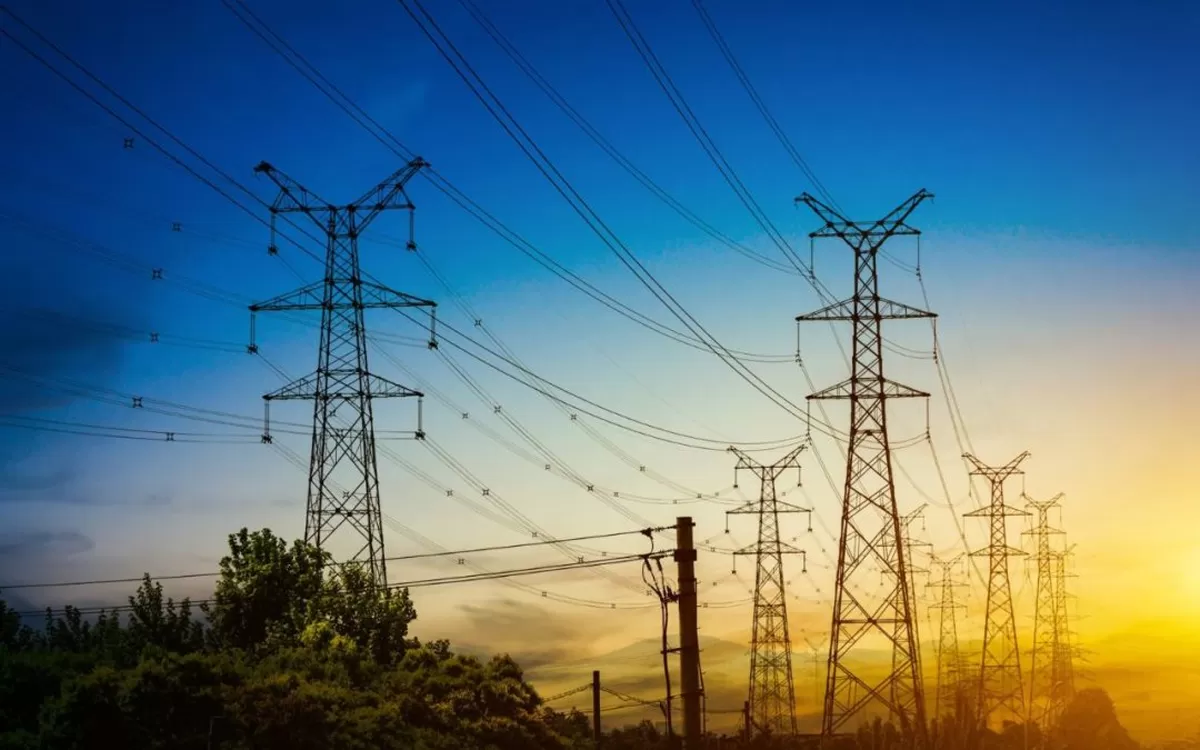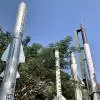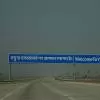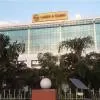Niche opportunities exist in the aggregates and crushing market.
With an estimated demand of 3.3 billion tonne, India accounts for roughly 7 per cent of the 48.3 billion metric tonne global market for aggregates, according to market research firm The Freedonia Group. Non-building construction activity comprises 70 per cent of aggregates demand by volume. This sector is expected to hold onto its lead through 2020.
Demand for aggregates for non-building construction will get a boost if upcoming NHAI and state road development projects get off the ground, says Asoktaru Chattopadhyay, Vice President-Crushing and Screening Business Area, Sandvik Construction India. He is also closely watching the rollout of power projects, dedicated railway corridors, port development projects and airports.
´Greenfield road projects and expansion projects, two to four-laning and four to six-laning are boosting demand for aggregates and hence crushing and screening units,´ says Ramesh Palagiri, Managing Director & CEO, Wirtgen India Pvt Ltd. ´Rail sector and new urban infrastructure projects could also give demand a stimulus.´
Mobile and static crushers
Road projects play a vital role in boosting demand for aggregates and hence crushers. Crushing and screening units can either be mobile, semi-mobile or static. ´However, the overall quantity of aggregates needed and this distribution over the length of projects makes mobile crushers more viable and economic to use for road construction,´ according to Neeraj Jain, Regional Sales Manager, Powerscreen. Mobile units deliver huge advantages to contractors and road makers as well as crushing contractors, agrees Chattopadhyay. ´Mobile units are easy to mobilise and hence excellent for continuous relocation,´ he says. ´They are mostly preferred for manufacturing granular sub-base and wet-mix macadam. Their only limiting factor is capacity, which is a maximum of 300 tph (tonne per hour) in aggregates crushing.´
´As a rule of thumb, stationary units are advised where production requirements exceed 250 tph and where the same quarry will be operated continuously for more than three to five years,´ opines Jain.
Commercial aggregates manufactures prefer to use stationary crushers because they present no capacity limitations, adds Chattopadhyay. Also, stationary crushers are easier and cheaper to operate. Their only limiting factor is mobility.
In-demand equipment
Generally, different sets of customers use different kinds of crushing units, so vendors benefit significantly when demand rises across categories, as is happening now.
´Demand for mobile as well as stationary units is on the rise, which is good for Sandvik because we offer stationary, mobile as well as semi-mobile solutions in various formats: Track-mounted crushers, semi-mobile wheel-mounted crushers, skid-mounted modular crushers and stationary crushers,´ affirms Chattopadhyay.
´Demand for mobile crushing equipment has been increasing since manufacturers started to make these in India as local manufacturing reduced the price gap,´ says Jain. ´Terex took the lead in this and, as a result, today we sell more 200 tph mobile units than all other manufacturers combined.´
´Demand for mobile units is definitely increasing owing to their ease of mobility,´ says Palagiri.
Kleemann´s entire range of crushing and screening equipment is track-mounted mobile, and includes the MOBICAT range of track-mounted jaw crushers, MOBIREX range of track-mounted impact crushers, MOBISCREEN series of track-mounted screening plants, and the MOBIFOX or MOBICONE range of secondary screening units, in models with production capacity varying from 200 tph to 1,500 tph.
Product trends affecting demand
Growing demand for quality ready-mix concrete (RMC) augurs well for sales of modern crushers and screening equipment that are best for manufacturing coarse and fine aggregates.
´Demand is growing for advanced aggregates and sand washing equipment,´ opines Rajender Khoda, Business Development Consultant (construction equipment).
´Cost-effective specially designed cone crushers and high-frequency screens to separate finer particles are better for manufacturing sand and quality aggregates than old crushing technology,´ says Jain. ´RMC and site-mixed concrete (SMC) per se require similar aggregates, but RMC users are generally more conscious of the quality of coarse, as well as fine aggregates including manufactured sand. So we expect the growing uptake of RMC to have a positive impact on demand for aggregates from the organised sector, which uses modern crushing and screening plants.´
´Almost all the aggregates purchased or manufactured by UltraTech are from three-stage VSI crushers because these manufacture aggregates that are consistent in shape and size, and hence, help improve the properties of concrete a great deal,´ affirms Anil Kulkarni, Technical Head, Ready-Mix Concrete, UltraTech Cement Ltd. ´Demand for large quantities of M50 or even M100 grade of concrete is soaring in metros, specifically for high-rise towers,´ shares Chattopadhyay. ´Demand for quality concrete sand is also at an all-time high. In particular, the demand for plaster sand is at an all-time high as it has proven itself to be better than natural sand. Mega housing and city development projects are big consumers of these aggregates.´ ´Like most concrete manufacturers now, we use crushed sand or manufactured sand instead of river sand,´ says Kulkarni. ´We also offer a popular brand of fine aggregate called UltraSand that is specifically meant for concrete applications, and manufactured sand with a different gradation for plastering works and treated to remove excessive silt.´ The key to quality, he explains, is to have a particle size and shape as close to natural sand as possible, and devoid of impurities. This can happen only through the judicious selection of the source of aggregates and top-class manufacturing of aggregates by deploying the right type of crushers and thorough testing of the rock strata.
While reputed concrete manufactures are using Sandvik plants to meet their demands, Chattopadhyay believes their demand is too huge to be internally fulfilled. That creates room for dedicated suppliers of manufactured sand to enter the market, especially India´s western and southern markets, which have embraced manufactured sand as an alternative to river sand. ´Other markets will accept this product in good time,´ he observes. ´Once the concept of manufactured sand picks up, crushed stone dust will fade away.´
Quick Bytes
Demand drivers: Roads and rail sector and new urban infrastructure projects.
Stationary crushers have no capacity limitations, are easier and cheaper to operate.
Demand for mobile units is increasing due to ease of mobility.
Semi-mobile units are faster to set up than static units.
Construction cos will see scope in recycling, primarily the rubble outcome of demolished high-rise buildings.
Planning to set up a crushing plant? Read this first!
´Less demand for crushing and screening equipment and reduced demand for aggregates and their lower pricing owing to lower infra investments and issues with iron ore mining have adversely impacted technology advancement, bringing it to a standstill,´ opines Rajender Khoda, Business Development Consultant (construction equipment). ´Until investments in realty pick up, this is unlikely to change. As things stand, the prices of aggregates continue to fall while the cost of setting up a crushing and screening plant is rising.´
Recycled aggregates: Scope and impact on demand for crushing equipment
Market estimates pegged recycled, secondary and other aggregates at a minuscule 5 per cent of all aggregate sales in 2013. ´We´re discussing recycling a lot, but it will take some more time, as absorbing recycled aggregate is a blueprint now; it needs a lot of push going forward. It is an absolute necessary for environment protection,´ opines Asoktaru Chattopadhyay, Vice President-Crushing and Screening Business Area, Sandvik Construction India.
To boost recycling, Chattopadhyay believes the focus should turn on relevant government clearances, permissions, production processes, etc. ´Clear guidelines are essential because the choice of recycling equipment will depend on the material to be processed and the end product to be produced,´ he says. ´We expect Sandvik crushers to play a key role in this.´
´Demand for recycled aggregates would grow if the capital investment necessitated would reduce,´ says Rajender Khoda, Business Development Consultant (construction equipment).
´Checking the illegal dumping of construction and demolition waste would boost recycling among contractors and uptake of mobile crushers for recycling,´ comments Neeraj Jain, Regional Sales Manager, Powerscreen. ´Such demand is so far low, owing to their relatively higher capital cost. In fact, in developed economies, mobile crushers are more widely used for recycling applications than virgin aggregate quarries.´
Jain hopes India will follow the good example of countries like the UK and Singapore, which recycle 99 per cent of their construction and demolition waste. ´In turn, that would generate demand for aggregate wash plants and mobile impact crushers, which are used to recover coarse and fine aggregates at the demolition site,´ he adds.
UltraTech generates recycled aggregates out of washed concrete and returned concrete by means of sophisticated aggregate reclaiming units. ´This not only helps us recycle aggregates but recycle water too,´ says Anil Kulkarni, Technical Head, Ready-Mix Concrete, UltraTech Cement Ltd. ´As of now, the Indian code specifications allow usage of recycled aggregates from construction and demolition (C&D) wastes only in non-structural applications, and hence we have to limit our usage to these. In future, we´d like to be able to use recycled aggregates from C&D wastes in concrete for all applications.´
Going forward, Chattopadhyay foresees plenty of demand for recycled aggregates from western India, Mumbai to be specific, and from Delhi in northern India, because these governments have a definite strategy for it. Construction companies, in turn, will see the scope in recycling, primarily the rubble outcome of demolished high-rise buildings.
Need for better quality control in the aggregates market
UltraTech puts every source of bought aggregates through thorough quality evaluation and qualification processes û something it would like to see across the industry. ´Certification schemes for aggregate plants, quality audits of aggregate manufacturers, statutory compliances, etc, are an immediate need,´ says Anil Kulkarni, Technical Head, Ready-Mix Concrete, UltraTech Cement Ltd.
UltraTech also carefully plans and monitors the deployment of accessory units like washing plants, the rehabilitation of the crushed area, logistic arrangements, mining, statutory compliances, etc, and deploys laboratory facility and trained personnel at the units. ´Such arrangements need to be carried out by all players in the industry to ensure predictability in offerings,´ adds Kulkarni.
Choice of crusher: Punj Lloyd
Punj Lloyd uses a combination of semi-mobile and stationary crushing and screening units at project sites.
´We deploy semi-mobile units at sites where the need is for less than 200 tph aggregates and the project duration is usually up to a year,´ says SK Goyal, Vice President-Buildings and Infrastructure, Punj Lloyd. ´At such sites, the unit may be required to be moved monthly, by means of a prime mover. Semi-mobile units are faster to set up than static units.´
´We deploy static stationary units for bigger projects,´ he adds. ´They offer a bigger stockpile and can continue to operate even if there is a snag in the jaw, providing extra cushion during execution. As crushing and screening best happens near the project site, separate arrangements are best made for each project. Sometimes, it is worthwhile sharing a stationary crushing plant for several sites if they are adjacent to each other, as we are doing for our Assam road projects. However, this is not the norm, as the logistic costs involved in transporting the aggregate are considerable.´ Mobile units aren´t a part of Punj Lloyd´s equipment portfolio, because they are more suited to mining operations wherein the unit must be relocated frequently, on a daily or weekly basis, according to Goyal. Mobile units are the costliest in terms of cost per yield because they have their own power source. Also, they provide no cushion in case of a breakdown as they operate in a continuous process.
Choice of crusher: HCC
´We usually go for stationary crushing and screening plants because they are better suited to the sort of projects we execute: Single projects with construction schedules lasting more than three to four years, requiring huge quantities of aggregates of various grades,´ says Anuran Ghatak, General Manager-Equipment, HCC.
´If more than 250 to 300 tph of aggregate is needed for continuous operations (say 10-12 hours per day), stationary units make a better choice,´ he adds. ´A properly designed fixed crushing plant can be controlled more closely, to get better quality aggregates of various grades at a single point.´
Static plants take longer to set up, but according to Ghatak: ´A little extra time spent upfront in setup yields better returns on capital expenditure.´
Mobile plants (wheel and track-mounted) need less space and less time for erection and commissioning and these can also be mobilised faster than the static plants. ´Mobile units are convenient when the plant needs to be moved from one site to another, fairly quickly with minimum hassles,´ he explains. ´They can also be positioned close to the quarry or aggregate site to save on transportation expenses of waste material and boulders.´
- Charu Bahri
To share your views on the Crushing and Screening Equipment market in India, write in at feedback@ConstructionWorld.in

